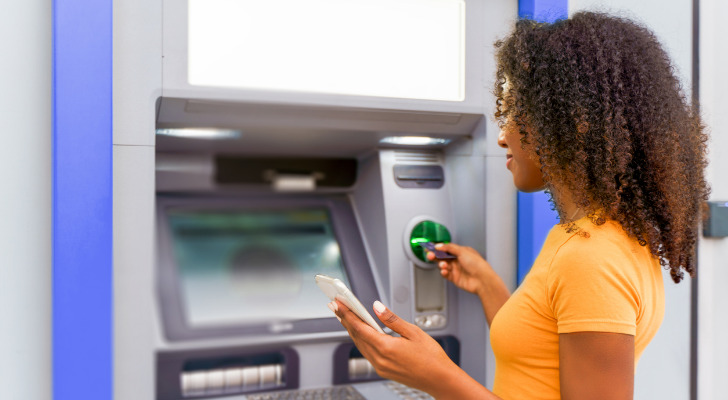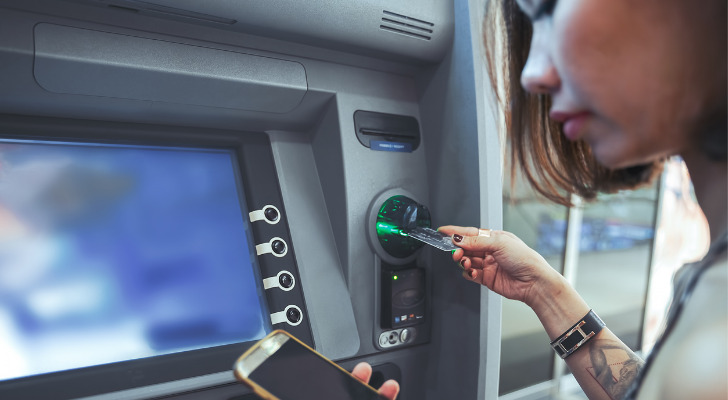In 2023, Americans spent roughly $415 billion in interest and fees related to financial products like bank accounts, according to the Financial Health Network’s FinHealth Spend Report 2024. While this dropped from the $319 billion spent in 2020, Americans still pay a hefty price to use financial products. However, whether you have been burned in the past or are new to banking, you can avoid or minimize bank fees through bank accounts that do not charge customers. Such banks do not charge monthly maintenance fees, do not have minimum balance requirements and have low initial deposits.
For more help with banking and financial planning, consider working with a financial advisor.
Common Bank Fees
You may think of banking as a way to simultaneously earn interest and securely store your money. While that is true for many customers, some banks will ding your account with fees for various infractions. Usually, they are avoidable if you understand the conditions ahead of time. These are some common fees to look out for.
Monthly Maintenance Fee
Many banks assess account charges if you do not meet specific requirements. For example, a checking account may stipulate a monthly minimum balance to prevent fees. Some banks also require you to route a direct deposit or use your debit card at least once per month to avoid fees. Otherwise, you could face monthly checking account fees that will vary by bank.
ATM Fees
Although many banks boast expansive ATM networks, you might only be able to access an out-of-network ATM in a pinch. As a result, you might pay around an average fee of $4.73 for withdrawing money from the wrong ATM, according to data from a 2023 Bankrate study.
Additionally, banks often provide ATM fee reimbursements that only cover your first few withdrawals. If you make too many monthly withdrawals, you could be on the hook for an average of almost $5 per transaction.
Excessive Withdrawal Fees
Before COVID-19, federal law prohibited bank customers from performing more than six monthly transactions with their savings accounts. This regulation is currently suspended with no set date to restart. However, if excessive withdrawals become limited again, you might pay up to $25 for excess transactions. That said, it is a good idea to use your checking account for transactions and leave your savings account balance to accrue interest.
Overdraft Fees
If you try to make a purchase without enough funds in your account, your purchase could be declined. If it goes through, you could feel the sting of overdraft fees.
Fortunately, many banks offer overdraft protection. It spares you from overdraft fees by allowing you to make purchases with money from your savings or other connected account. Some banks even offer free overdraft protection.
Insufficient Fund Fees
If you do not have overdraft protection, fees can be as high as $35 for an insufficient transaction. Like overdraft fees, you can prevent insufficient fund fees by maintaining a healthy balance in your checking account. You can even subscribe to email or text messages that notify you of a low balance.
Wire Transfer Fee
Wire transfers can help you send funds rapidly or in sizable amounts and are handy for international financial transactions. However, there are specific fees for this service, unlike when you move funds on your bank’s website or app. A domestic wire transfer generally costs up to$35, while international wire transfers can cost up to $50.
Early Account Closing Fee
You might open a bank account and find a better deal elsewhere soon after. Unfortunately, switching bank accounts is not always easy. Your bank might have a condition for you to keep your account for a specified period – often three to six months – before you can close it without a fee. Shuttering the bank account before the time limit may cost you up to $25.
Banks That Do Not Charge Fees

While you can circumvent some bank fees, all the hoop-jumping can get irritating. Luckily, several banks offer no-fee checking accounts you can use without stress.
Capital One 360 Checking
Capital One offers a checking account with an excellent mobile app user experience and no opening minimum deposit requirement. The bank boasts hundreds of branch locations and an ATM network of over 70,000 locations. In addition, you’ll earn 3.60% APY on your account balance and never experience overdraft fees. However, the account doesn’t provide reimbursement for out-of-network ATM fees.
However, the account does not provide reimbursement for out-of-network ATM fees. Other infrequent bank functions, such as stop payment and outgoing wire transfers, incur fees, as well. Lastly, customers will pay $20 for a fifty-quantity checkbook and $25 for 100 checks, with the first fifty checks for the account being free.
Ally Spending Account
Ally Bank has no physical locations and relies on a top-notch digital customer experience to acquire business. Its Spending Account has no monthly fee and no overdraft fees. You can open the account with any amount of money and earn 0.10% APY on balances below $15,000 and 0.25% on balances over $15,000.
The account provides a free ATM network with over 75,000 terminals and $10 in monthly reimbursement for out-of-network ATM withdrawals.
That said, Ally’s main drawback is its lack of physical locations, which can pose a problem if you prefer banking in person. Also, it charges $20 for outgoing domestic wires.
Discover® Cashback Debit Account
Another online-only financial institution, Discover, offers a no-fee checking account with 1.00% cash back on $3,000 of debit card purchases monthly. If you max out this reward every month, you’ll earn $360 annually (for comparison, you would have to maintain a balance of at least $36,000 with Capital One’s account or $15,001 with Ally to match this rate).
Additionally, its customers have access to over 60,000 free ATMs and free overdraft protection. According to Discover’s website, the only fee this account charges is $30 for outgoing wire transfers.
Alliant Credit Union High-Rate Checking Account
Alliant’s checking account features 0.25% APY, plus a 0.25% dividend payment for customers who opt into paperless statements and implement a monthly electronic deposit. It also has over 80,000 in-network ATMs and $20 of monthly reimbursement for out-of-network ATM fees.
The account charges fees for conventional services, such as stop payment, foreign transactions and paper checks. However, it has no monthly minimums, no overdraft fees and no maintenance fees.
Chase College Checking Account
Students may want to check out Chase’s account, which charges no monthly maintenance fee for customers ages 17 to 24 who show proof of student status. The account has no minimum opening deposit but charges fees if you do not set up a regular electronic deposit to the account or if the average ending daily balance falls beneath $5,000. You can even benefit from a new customer promotion that gives you a $100 bonus for opening a student account. Chase provides a free ATM network of 15,000 locations. However, it provides no ATM reimbursements, zero interest and has a $34 overdraft fee.
Bank of America Advantage Banking
Bank of America offers three accounts with potentially no monthly fees. Its SafeBalance Banking® account charges no monthly fee for students under age 25 and all account holders under 18. Next, its Advantage Plus account waives the monthly fee if you have a qualifying direct deposit of at least $250 or maintain a $1,500 minimum daily balance. Lastly, its Advantage Relationship account removes monthly fees if you maintain a combined balance of $10,000 in qualifying connected accounts. All three accounts offer free overdraft protection.
Citi Basic Banking
Citi’s Basic Banking account removes its monthly service fee for customers who make a qualifying direct deposit and bill payment per month or maintain a combined average monthly balance of $1,500. It provides free usage of over 65,000 ATMs but does not provide out-of-network reimbursement. The account does not apply the monthly fee to customers under age 18 or over 62. However, its website cautions that all customers will experience certain fees outside of the monthly maintenance charge.
CIBC US iCan Checking Account
Customers in six states have access to CIBC Bank’s account that charges no monthly fees. You need $50 to open the account and will not earn interest. Instead, the account returns 1% cash back on up to $2,000 of debit card purchases per month. Your first round of checks is free, and you can receive $50 per month of ATM fee reimbursements.
How to Choose a Fee-Free Bank

Many banks offer fee-free accounts, but your choice of bank will account for additional factors based on your circumstances. These are some factors to consider when shopping for a zero-fee bank account.
Assess the Bank’s Auxiliary Services
Most banks provide more than just checking and savings accounts. For example, you might be interested in opening an investment account, getting a mortgage or speaking with a financial advisor. Therefore, it is wise to ask the bank if they provide services matching your preferences before committing to an account.
Calculate Interest Payments
Many banks offer interest or cash back for checking account holders. Take stock of your average monthly balance and spending habits to see what APY or rewards system will give you the most bang for your buck.
Consider the Fees
While this article outlines accounts with zero or minimal fees, most banks charge for services like wire transfers and bounced checks. If you are concerned about a particular fee or have run into specific financial challenges in the past, some banks’ fee structures might be more punitive for you than others.
Physical Versus Digital Banking
Mobile and online banking are more convenient and accessible than ever. Virtually every bank account allows you to deposit checks on the go and apply for loans and credit cards online. However, steer clear of online-only banks if you want to bank at a brick-and-mortar location.
Institution Type
You can hold a checking account with a bank, credit union or banking platform. Banking platforms may be unfamiliar, but they are online companies that work with traditional banks and often provide better interest rates and additional financial tools.
Convenience
Ask yourself how you like to withdraw your money. You might get by on cash withdrawals from ATMs or grocery store purchases, or you may choose to go entirely cashless. Maybe you travel to your local bank branch for services. No matter your preference, the last thing you want is frustration when trying to access your money.
Read Everything
Check for FDIC insurance and the fees the account can incur. Ask the bank if you need clarity on any point.
Bottom Line
It does not take a mountain of cash to open an account with a high interest rate and low fees. Various online and physical institutions offer accessible bank accounts that do not charge monthly fees with minimal effort on your part. Whether you are in college, at the height of your career or retired, there is a fee-free bank account to suit you.
Banking Tips
- Finding a qualified financial advisor doesn’t have to be hard. SmartAsset’s free tool matches you with vetted financial advisors who serve your area, and you can interview your advisor matches at no cost to decide which one is right for you. If you’re ready to find an advisor who can help you achieve your financial goals, get started now.
- For savings, online high-yield savings accounts are another strong option.
Photo credit: ©iStock.com/PeopleImages, ©iStock.com/tommaso79, ©iStock.com/Enes Evren
